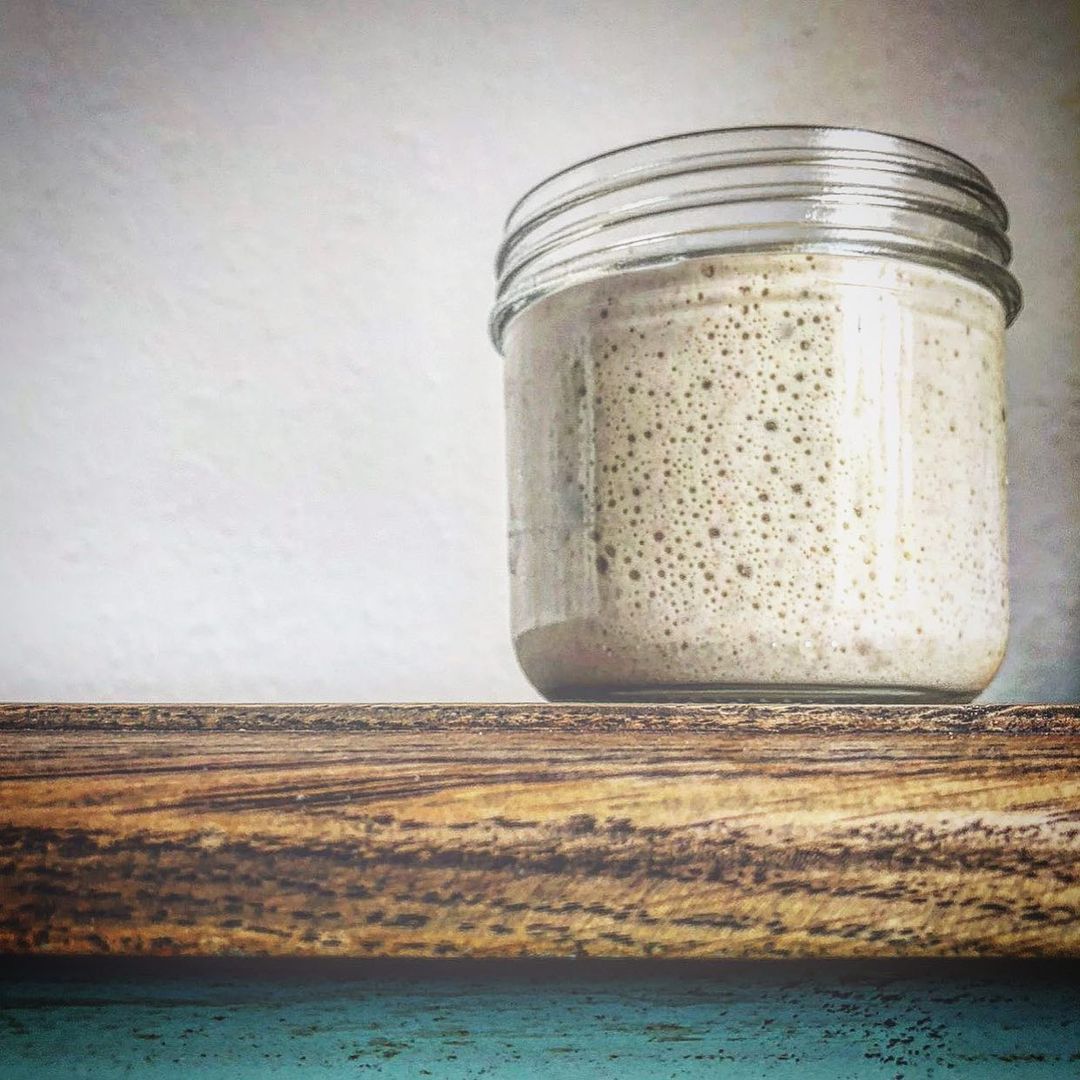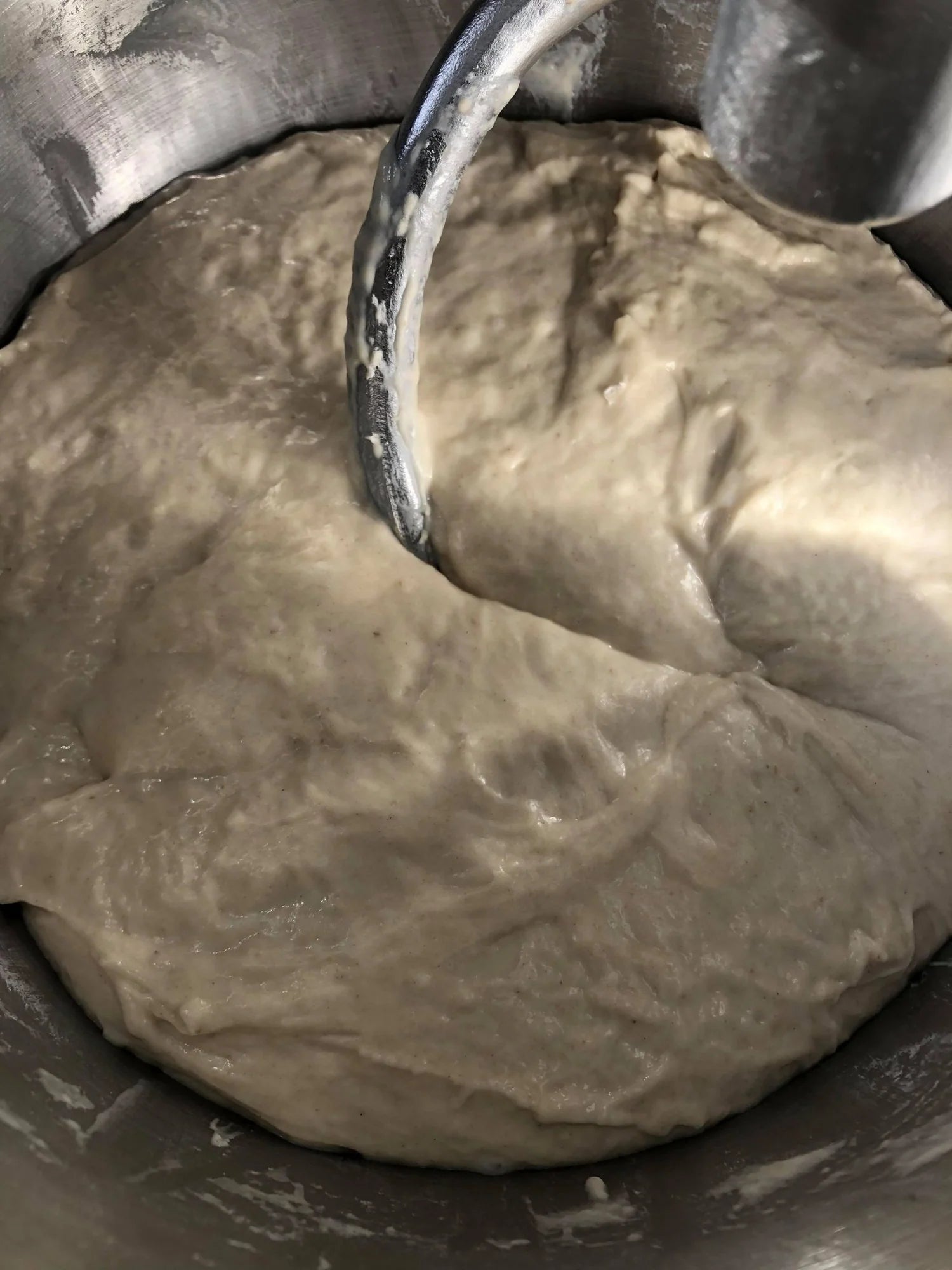Article: The Art of Sourdough: Understanding the Basics

The Art of Sourdough: Understanding the Basics
At Simpel Surdej, we offer a wide range of products for sourdough baking, from proofing baskets and dough scrapers to bread lames and flour brushes. In this article, we will guide you through the basics of sourdough-making and share some tips and tricks to help you create the perfect loaf.
The Process of Making Sourdough

Sourdough is a mixture of flour and water that is left to ferment and rise naturally, using wild yeasts and bacteria present in the environment. To create your own sourdough starter, you will need:
- A clean jar or container
- Flour
- Water
Start by mixing equal parts of flour and water in the jar, and stirring well. You can use any type of flour, but whole wheat or rye flour tend to work best, as they contain more natural yeasts and bacteria. Cover the jar loosely with a lid or cloth, and let it sit at room temperature for 24 hours.
After the first day, you should start seeing small bubbles forming on the surface of the mixture, which means that fermentation has begun. Feed the sourdough by discarding half of the mixture and adding fresh flour and water in equal parts. Repeat this process every day for a week, or until the sourdough is active and bubbly.
Maintaining Your Sourdough Starter
Once your sourdough is active, you can use it to make bread, pancakes, waffles, and many other delicious baked goods. However, to keep it healthy and alive, you will need to maintain it regularly. Here are some tips for taking care of your sourdough starter:
-
Feed it regularly: Depending on how often you use your sourdough, you will need to feed it every day or every few days. The general rule is to discard half of the mixture and add fresh flour and water in equal parts. This will keep the sourdough fresh and active.
-
Store it properly: Sourdough can be stored in the fridge or at room temperature, depending on how often you use it. If you bake bread every day, you can leave it at room temperature, but if you bake less frequently, it's better to keep it in the fridge. Just remember to feed it regularly, even if it's in the fridge.
-
Use a scale: Sourdough baking requires precise measurements of flour and water, so it's important to use a scale to ensure accuracy. We recommend the MyWeight KD-8000 digital scale, which has a baker's percentage function and can measure up to 8 kg.
The Benefits of Sourdough Bread

Sourdough bread is not only delicious, but it also has many health benefits. Here are some of the reasons why you should switch to sourdough:
-
Easier digestion: Sourdough contains probiotics and enzymes that help break down gluten and other complex carbohydrates, making it easier for the body to digest. This means that people with gluten sensitivity or digestion problems may tolerate sourdough better than other types of bread.
-
Lower glycemic index: Sourdough has a lower glycemic index than commercial bread, which means that it releases glucose more slowly into the bloodstream, avoiding blood sugar spikes and crashes.
-
More nutrients: Sourdough bread is richer in vitamins and minerals, as the fermentation process increases the bioavailability of nutrients and breaks down anti-nutrients such as phytic acid.
Sourdough Baking Tips and Tricks

Sourdough baking requires practice and patience, but with these tips and tricks, you can improve your skills and create amazing bread:
-
Use high-quality flour: The quality of the flour you use will affect the taste and texture of your bread, so it's worth investing in a good brand. At Simpel Surdej, we offer a selection of organic and stone-ground flours, such as the Type 00 Hvedemel and the Kornby Mølle Purpurhvede Nr. 3.
-
Use a baking steel or stone: A baking steel or stone will help distribute heat evenly and create a crisp crust. We recommend the Baking Steel, which is made of high-quality steel and can withstand high temperatures.
-
Use a bench knife or scraper: A bench knife or scraper is an essential tool for sourdough baking, as it helps you shape and cut the dough. We offer the Bench Knife Oak and the Dough Scraper, both of which are made of high-quality materials and can last for years.
-
Use a proofing basket: A proofing basket, also known as a banneton, is a special basket used to shape and proof the dough. It creates a beautiful pattern on the crust and helps the bread keep its shape. We offer a variety of proofing baskets, such as the Oval Waffle Monster Basket and the Round Grooved Basket.
-
Use a bread lame: A bread lame is a special tool used to make incisions on the dough before baking. It allows the bread to expand without breaking and creates a beautiful design on the crust. We offer the Bread Lame Ash and the Bread Lame Smoked Oak, both of which are handmade and unique.
Conclusion
Sourdough baking is a rewarding and delicious hobby that can improve your health and impress your friends and family. By following the tips and using the right tools, you can create amazing bread and express your creativity. At Simpel Surdej, we are passionate about sourdough and offer a wide range of products to help you on your journey. Try our Infrared Thermometer for precise temperature readings, our Canelé Copper Mold for fancy desserts, or our Rye Bread Form for authentic Danish rye bread. Happy baking!
FAQs
How long does it take to make sourdough bread?The process of making sourdough bread can take anywhere from 12 to 24 hours, depending on the recipe and the temperature. However, most of the time is spent waiting for the bread to rise and proof, so you don't need to be actively working on it all the time.
Do I need special equipment to make sourdough bread?While you can make sourdough bread with basic kitchen tools, having some specialized equipment can make the process easier and more efficient. At Simpel Surdej, we offer a variety of tools and accessories to help you bake the perfect loaf, such as proofing baskets, bread lames, and dough scrapers.
Can I use commercial yeast instead of sourdough?While you can use commercial yeast to make bread, it will not have the same taste and texture as sourdough bread. Commercial yeast is a single strain of yeast that ferments quickly and produces a uniform flavor, while sourdough contains a variety of wild yeasts and bacteria that create a complex and unique flavor.
Can I freeze sourdough bread?Yes, you can freeze sourdough bread for up to 3 months. To thaw it, leave it at room temperature for a few hours or heat it up in the oven.
What is the best flour to use for sourdough bread?You can use any type of flour to make sourdough bread, but whole wheat and rye flour tend to work best, as they contain more natural yeasts and bacteria. At Simpel Surdej, we offer a selection of organic and stone-ground flours, such as the Mejnerts Mølle Ølandshvedemel Fuldkorn and the Kornby Mølle Hvedemel Nr. 2.
What is the shelf life of sourdough bread?Sourdough bread has a longer shelf life than other types of bread because the natural acidity from the fermentation process helps to preserve it. It can typically last for up to a week if stored properly.
Can I make gluten-free sourdough bread?
Yes, you can make gluten-free sourdough by using gluten-free flours such as rice flour, corn flour, and potato flour. At Simpel Surdej, we offer organic rice flour and gluten-free type-00 flour from Mejnerts Mølle. They are perfect for making gluten-free sourdough bread.


Leave a comment
This site is protected by reCAPTCHA and the Google Privacy Policy and Terms of Service apply.